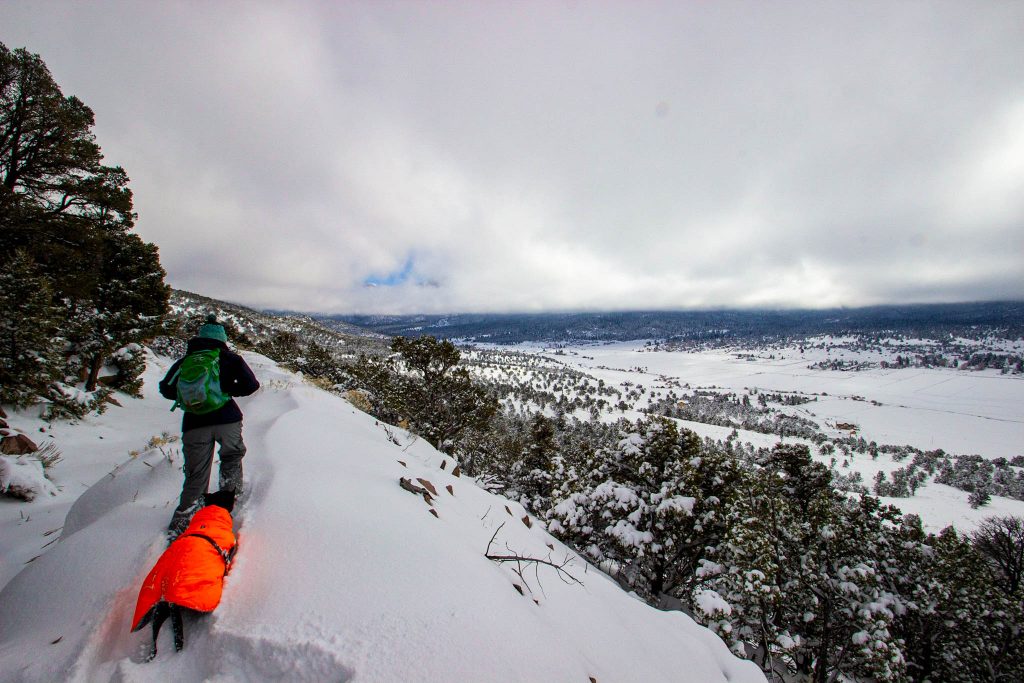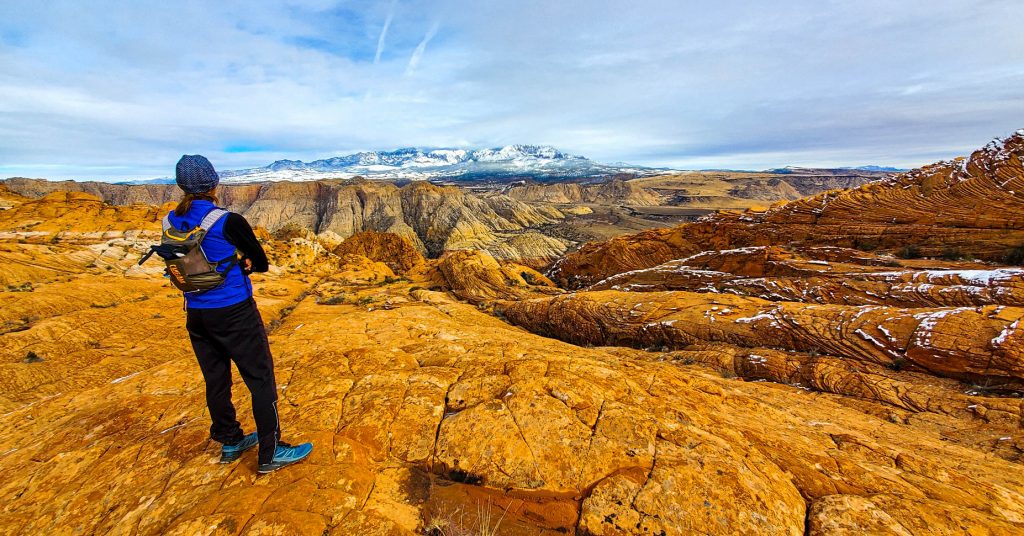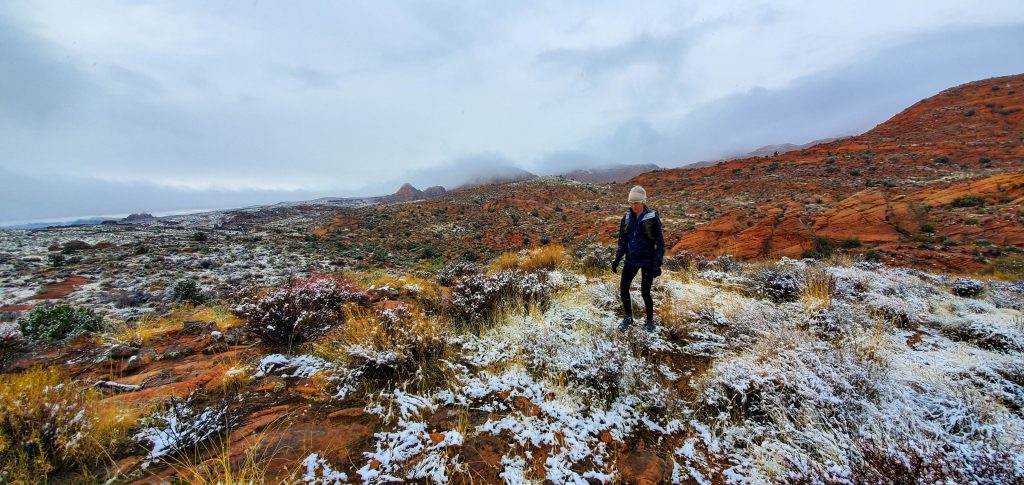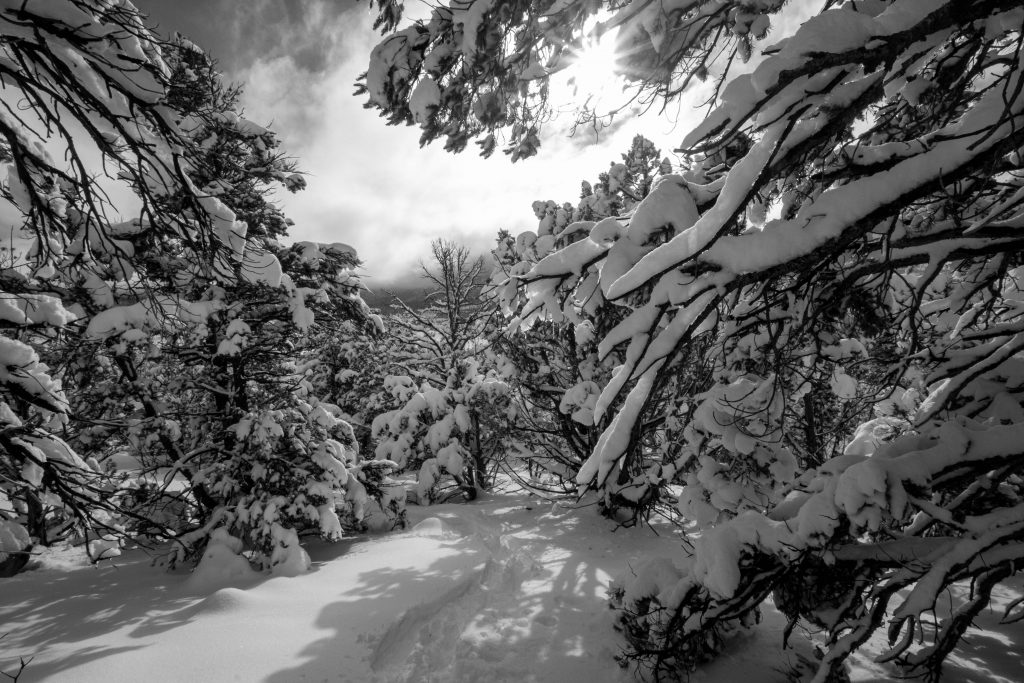I pull my gloves off.
Despite the fact that the ambient temperature is what a desert rat would describe as freezing or the fact that the precipitation falling from the sky is coming in both rain and snow forms, I have this hope that somehow removing my gloves will be better than keeping them on. This is partially due to the fact that I could ring them out and have a stream of water coming off as they are completely saturated.
The cold air hits my now bare hands with force. The breeze carries the moisture and the cold, biting my already frozen skin. The absurdity of my hope finally registers. I ring out the soaking gloves and reluctantly put them back on. Better, not good, but at least better than no gloves at all. There’s only one option, keep moving.

Being a human is a complicated situation.
According to a UC Berkely study, there are 27 distinct dimensions needed to describe the gamut of human emotions. Notice that is dimensions to describe the emotions, not that there are only 27 emotions. Most of our emotions are multi-faceted and can take a positive or negative connotation depending on context. Are you abroad? Nostalgia takes on homesickness. At home, the same emotion can have a feeling of belonging or feeling accepted into where you are.
In addition to all those emotions, we have somewhere between 5 and 21 different senses. We were all taught in school that we had the commonly held five; taste, touch, smell, sight and hearing. While most of us learn our reality based mostly on those five, there are multiple others that we might not think about. For example, the sense of balance is moderated by liquid in our inner ear and has little do with those original five.
Within all of these senses and emotions, there exists a sliding scale of comfort vs discomfort, like vs dislike, pain vs pleasure. This scale is how our bodies tell us the things we should do to survive and those we shouldn’t do for the same reason. We’ve slowly evolved our surroundings, modifying our environment in countless ways so that
For example, most of us exist in a pretty homogeneous temperature zone. We reside in boxes made of sticks, drywall and insulation that we keep heated/cooled to 72 degrees. Within that box, there is a portal where our 4-wheeled transportation devices exist. We walk from our box to said device that is also temperature controlled. The device transports us to work where we may have to walk outside for a few hundred feet, but are then once again in a temperature controlled environment.
And at the end of the day we reverse the process.
For the first time in human history, it is entirely possible to live without ever experiencing temperatures outside of what is considered comfortable. Which is to say that among all those emotions and senses, we have created a way to only experience the middle and we are kind of stuck there most of the time.

I mostly remember the weight.
I was somewhere
Being so young, I don’t recall all the details like what the temperature was supposed to drop to, why it was so cold in October, etc. I do remember that we were prepared for the cold.
I vaguely remember cooking pine nuts and I’m pretty sure we would have eaten dinner. It was dark and once there was nothing left to do but go to bed, we did. I crawled up onto the bed that overhung the cab and then my dad had to help me into the sleeping bags. And that’s when I felt the weight.
The sleeping bags we were using were the only ones I can remember from this time. They had a brown jean shell. Basically, the weight/texture/color of Carhartt Overalls. Of course, the inside of these bags was lined with flannel. I have no idea what they used for insulation between those two layers. What I do know is by themselves these bags were heavy. We had multiples laid on top of each other to be sure we wouldn’t freeze to death. I had a moment of panic when I realized I could barely move, but soon relaxed into the cocoon and fell asleep.
My first memory of cold, or more accurately, the avoidance of it.

Humans are a lot like a fire. We need things to survive, we are not self-sustaining. However, those exact same things that we need to keep going can, and will, kill us if given at the wrong time or in too much abundance. A fire needs fuel, add too much fuel at once and suddenly the fire dies. Of course, the opposite is also true, not enough fuel and the fire putters to coals and eventually goes out.
Extreme cold will kill you. That’s pretty much a given. It’s the reason your hands hurt when they hit that point where they begin to lose their tactile sense and the color begins to drain toward a splotchy white and blue mix. It’s the reason that when the temperature drops below 70 degrees, we intuitively begin to add clothing, turn up the heat, start talking about it being freezing, buy jackets and spend an inordinate amount of energy avoiding the cold.
What if I told you that no cold could kill you as well?
The current obesity epidemic is well documented, overly obvious and not even somewhat debatable. And while there are some pretty obvious reasons for this epidemic, the avoidance of cold probably isn’t one that you’ve heard.
If you think about it, it makes sense that we should be cold. We evolved in a natural world that is dominated by seasons. Hot in the summer, cold in the winter and a moderation of the two in between. Much like a bear that builds fat stores in the summer, our bodies have two types of fat, brown and white. One stores calories and the other burns them for heat.
Seven million years of human evolution were dominated by two challenges: food scarcity and cold. “In the last 0.9 inches of our evolutionary mile,” they write, pointing to the fundamental lifestyle changes brought about by refrigeration and modern transportation, “we solved them both.” Other species don’t exhibit nearly as much obesity and chronic disease as we warm, overfed humans and our pets do. “Maybe our problem,” they continue, “is that winter never comes.”
The Atlantic
Too much cold will definitely kill us, not enough cold is slowly killing us.

With my rung out but still overly saturated gloves back in place, I begin to run in place trying to keep myself somewhat warm. I had started this little jaunt with the idea that there might be a little precipitation. We ran up into the fog, some snow fell at the top of Padre Canyon and then it turned to a consistent drizzle as we descended back toward the car. The windbreaker I had dropped into my running pack as a last resort was now completely saturated both from my perspiration and the precipitation coming down. Being completely drenched has dropped my temperature and I am cold.
My hands are the biggest point of discomfort. The gloves I brought, while containing a little insulation, are mostly for keeping the wind off. Now that they are sopping, they are better than no gloves, but not by much. As we continue running toward our four-wheeled coffins, I keep pushing my fingers deeper into them as if I was going to find a smidgen of warmth if they were just a little tighter.
We make it back to pavement. The group pulls away from me, I hate running on pavement. I make it past the sand dunes, then the toll booth and then the car. Few niceties are shared, the coffin is immediately turned on with heaters and butt warmers on full blast. As the group fragments and says the see you laters, I rip the outer, drenched layers off my body. Finally inside with the heater blasting in my face and no longer moving, the shivers start.
I am cold.
P. L. and R.



Awesome